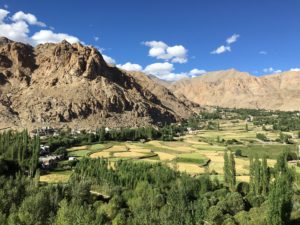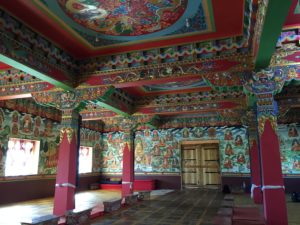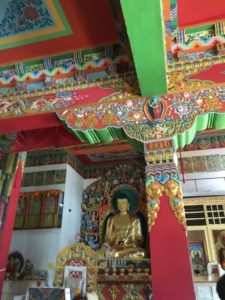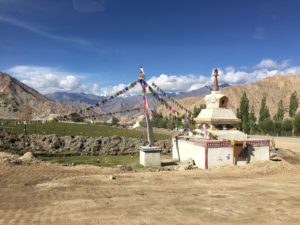By Shirin Mazdeyasna, 08/20/2016. I don’t even know how to put my experience in Ladakh in words. My days in Ladakh has been amazingly unbelievable. I had very little access to wifi every few days, so here is my belated post.
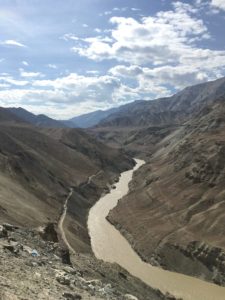
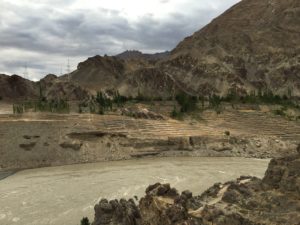
Located by the Indus River and on the silkroad, Ladakh used to have an important strategic location, which however today is dwindled and is mainly visited for tourism.
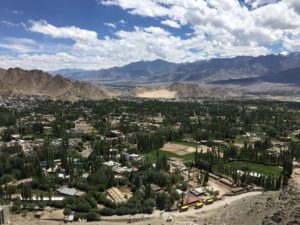
Ladakh is absolutely a unique place, in the sense of nature, co-existence of cultures and religions, and its people. The manifestation of peace and harmony was present all around in people’s behavior and the fabric of Leh and villages. The Tibetan buddhists (Tibetan and Ladakhi), the Muslims (Sunni and Shia), and the Hindu were in complete agreement with each other. Ladakh’s two main cities are Leh and Kargil, the first mainly practice Tibetan Buddhism and the latter mostly Shia Islam.
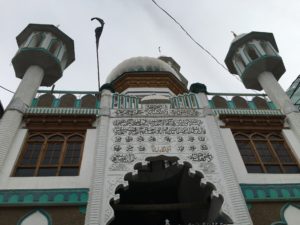
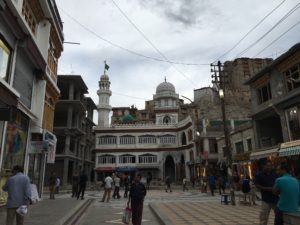 Both Sunni and Shia Mosques are on the main street of Leh with a 300 feet radius.
Both Sunni and Shia Mosques are on the main street of Leh with a 300 feet radius.
Their devotion to religion, specifically Himalayan Buddhism, is portrayed in both people’s respectful behavior and all around Ladakh in forms of prayer flags, stupas, mani walls, and praying wheels. I will dedicate an entire post to depicting this devotional manifestation in daily practices and rituals all around Ladakh.
After getting acclimated to the high altitude (over 9,800 ft) for the first day, we as the program studying Himalayan Buddhism philosophy and sacred art, visited a different monastery in Leh each morning and afternoon and had a relevant lecture/discussion in the monasteries.
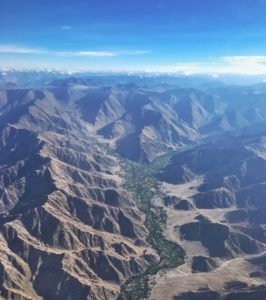
On Aug 6, at Spituk Gompa, we had a lecture on the introduction to Buddhism, different schools of its philosophy, Siddhartha Shakyamuni, and the process of his enlightenment and his teachings. Interestingly enough, this day was the first day that Shakyamuni Buddha began teaching the Dharma around 500 BCE.
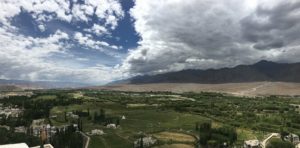
In the afternoon of Aug 6, we focused on the spread of Buddhism in Tibet in the 5-7th Century, the widespread replacement of Tibetan ancient religion, Bon faith with buddhism, and the creation of tibetan language off sanskrit to translate indian buddhist concepts.
At the Namgyal Tsemo Gompa a sacred painting of the Buddha was analysed and each element and symbol was introduced. Inside the temple was an amazing great statue of Maitreya, the future Buddha.
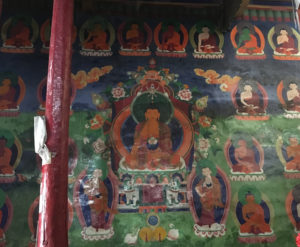
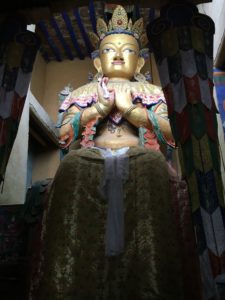
Namgyal Tsemo Gompa was located on top of a mountain on the outskirts of the valley and offered a phenomenal view of Leh.
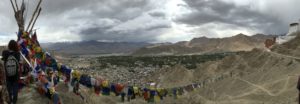
Hemis Monastery (also known as The Lone place of the Compassionate One) is an ancient monastery honoring Padmasambhava annually in June with its well-known festivals. This monastery offered a great classroom for learning about the sacred art of the wheel of life, wrathful deities, and the philosophy behind each symbol.
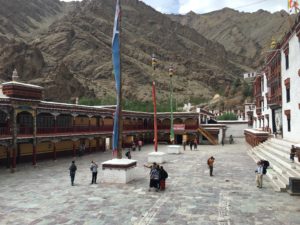
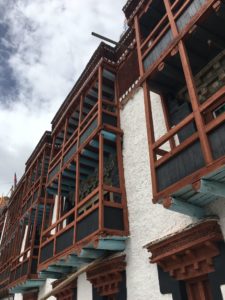
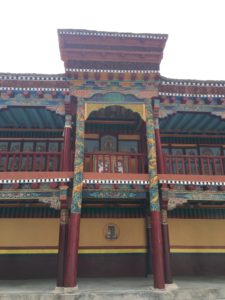
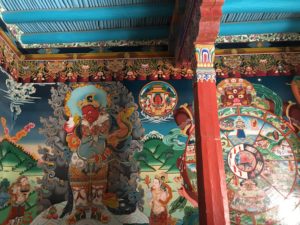
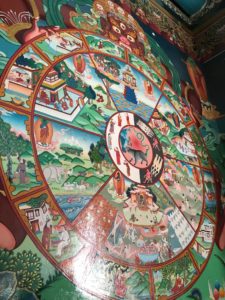
It’s amazing how by knowing the symbols of visual dharma, one can internalize the concepts through practice and looking at the art -manifestation of the philosophy.
At the Samker Gompa, we practiced and studied the mind in Buddhism through meditation.
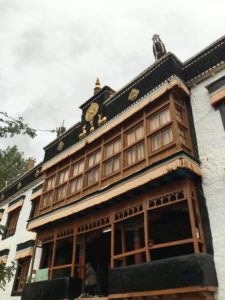
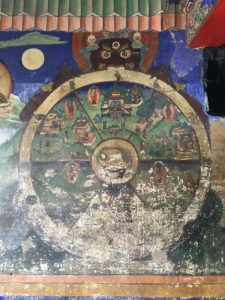
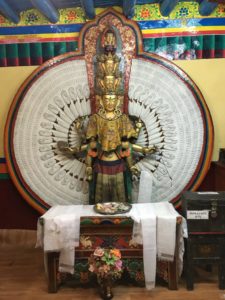
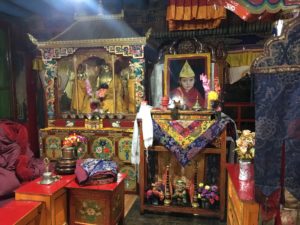
At the Stakna Gompa, overviewing the Indus River, we started our focus on Mahayana Buddhism, on the Lam Rim and Lama Tsongkhapa: three principal aspects of the path.
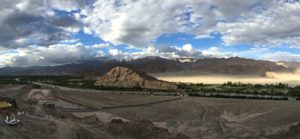
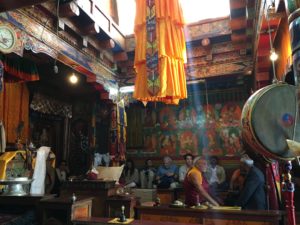
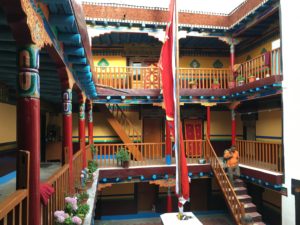
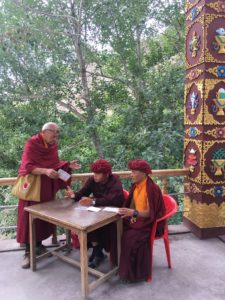
During our trips to different monasteries, we had a local high lama, Genla, with us and it was such a phenomenal experience talking to him and being around his humbleness.
Genla was a monk at the Lama Yuru (Yungdung) Monastery, which is one of the largest and oldest gompas in Ladakh. It is situated on a mountain overviewing one of the wonders of Ladakh, lamayuru, the moonland of Ladakh. The mountains are some of the last remaining depths of former mediterranean sea.
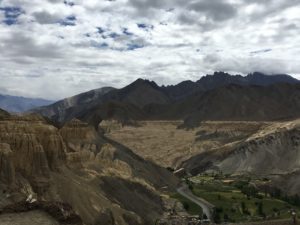
Lama Yuru (Yungdung) Monastery, similar to a lot of other monasteries in Leh was built on/within a mountain, secluded from society. The coexistence and balance of nature versus man made structures are absolutely amazing in Ladakh. Even the traditional architecture is respecting nature and what exists priorly.
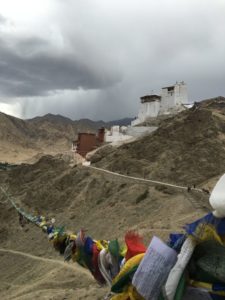
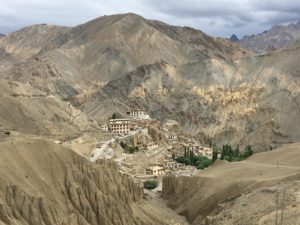

Lama Yuru (Yungdung) Monastery had amazing art works at the entrance and inside. The sacred art works as visual dharma, depicting the teachings in other ways than words. Learning the imagery and symbols are very empowering and all has meanings. Inside the temple was the cave where master Nāropā meditated in his time.
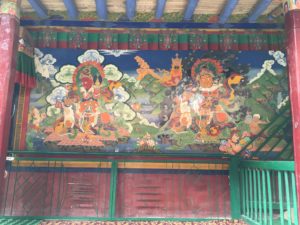
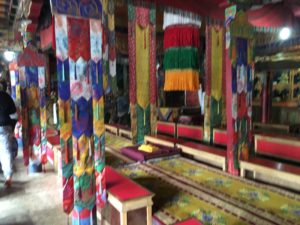
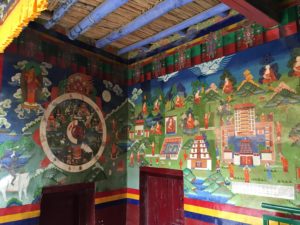
Outside overviewing Lamayouro village and the moonland mountains, there were a series of ancient stupas, chakras, and prayer flags.
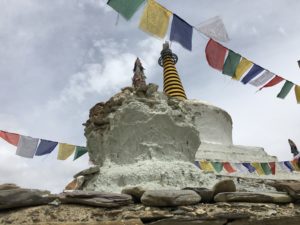
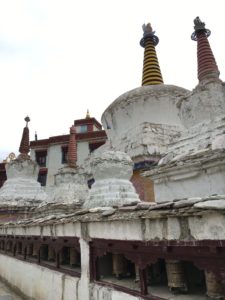
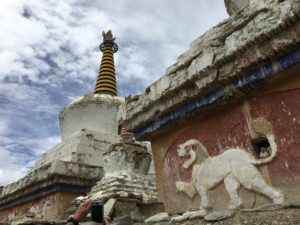
At the Likir Monastery, we learned more about imagery symbols used in the murals of the sacred art, as well as death meditation with a focus on impermanence.
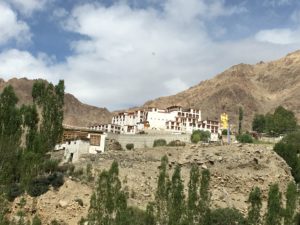
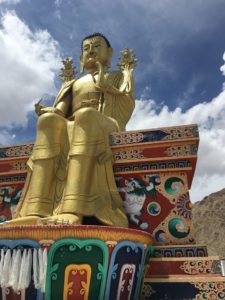
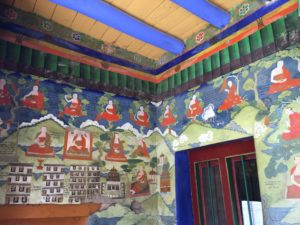
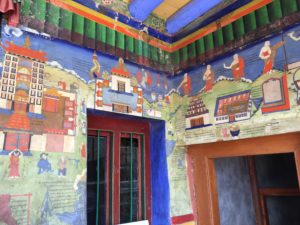
At the Rizong Monastery, one of the most secluded monasteries, we observed beautiful murals inside the monastery and did a very powerful meditation on mothers and an attempt on visualizing all beings as our mothers in the past. I am speechless of the power of the compassion of the Tibetan Buddhists and how they envision other human beings and animals.
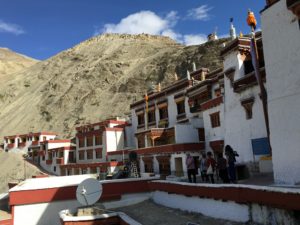
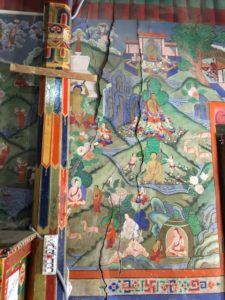
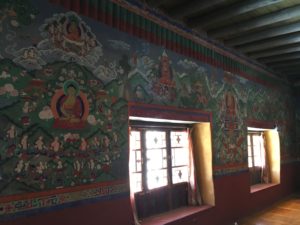
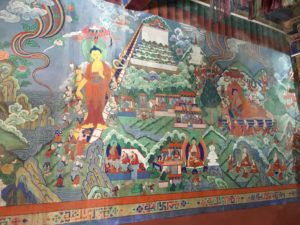
We finished our visits to Ladakh’s monasteries at the magnificent Phyang Monastery. There were two different temples of ancient and modern, and the below pictures are from the modern temple. The murals inside the monastery all around depicts the life of Siddhārtha Gautama. We had a final discussion on the Correct View.
